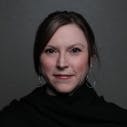Science on solid-state lighting and health can’t be developed in a vacuum
The webcast that covered lighting for health and wellbeing this week was very stimulating. Of course, the main value is (a) the explanation delivered by Octavio Perez regarding melanopic stimulus and Equivalent Melanopic Lux (EML), and how these mechanisms and metrics can be understood and applied to human-centric lighting design; and (b) the potential market for circadian lighting as outlined by Strategies Unlimited director Philip Smallwood. (FYI, a full market research report is forthcoming in early 2019; it will contain specific details on circadian lighting and lighting for disinfection applications from the analysts.)
I’m sure there are some folks out there who think we are beating this human-centric lighting thing to death – “Over it, done, moving on.” Hey, I know; we’ve been holding webcasts and publishing articles going back to 2015 that claim we have the tools to implement human-centric lighting design principles. But face it: We’re still encountering different interpretations of the human-centric lighting studies driven by experts in the scientific community.
To me, that diversity of interpretation proves that we need to continue canvassing the knowledge base on topics such as metrics for circadian lighting, integration of smart lighting technology and the Internet of Things (IoT), how to ensure quality of light is prioritized alongside energy-efficiency regulations, and so on.
I’m going to offer a few quotes regarding tunable lighting, blue-rich light, and lighting research from around the SSL community. Please don’t misunderstand their usage here; I’ve linked the full source to each individual for additional context. They are sure to spark some chatter.
“Color-changing lighting systems that mimic daylighting are logical.” ~ Ian Ashdown, 2015
“The basics are, we know how your eye responds to light — that bit is proven. We know there is a cycle, that you need more in the day and less at night. Within that, doing something is better than doing nothing. Fixed white light is terrible. Doing anything that’s more like nature has got to be good.” ~ Fenella Frost, 2016
“Not knowing all of the answers shouldn’t stop us from designing and implementing new lighting solutions targeted to deliver circadian-effective light to the built environment.” ~ Mariana Figueiro, 2016
“Simulation is nice, but we need to evaluate performance.” ~ Octavio Perez, 2018
“The whole benefit or one of the big benefits of LEDs and LED systems is that they’re tunable, right, so you can actually play around with the spectrum whereas with incandescents, all you can do is dim it.” ~ Philip Smallwood, 2018
The quality of the questions from our audience, though, is what sealed my opinion that there is demand for continued exploration of these topics. Even though we may not know everything about the impact of SSL, we must continue to move forward with the investigation of how it can be improved and inform the advanced application of the lighting for a better outcome. Science can’t exist in a vacuum, though; as Dr. Perez also stated during the webcast, “We have to know the number crunching in one thing, and the other is evidence-based research [with] real people in real spaces.” Check out the webcast and comment below with your thoughts.

Carrie Meadows | Editor-in-Chief, LEDs Magazine
Carrie Meadows has more than 20 years of experience in the publishing and media industry. She worked with the PennWell Technology Group for more than 17 years, having been part of the editorial staff at Solid State Technology, Microlithography World, Lightwave, Portable Design, CleanRooms, Laser Focus World, and Vision Systems Design before the group was acquired by current parent company Endeavor Business Media.
Meadows has received finalist recognition for LEDs Magazine in the FOLIO Eddie Awards, and has volunteered as a judge on several B2B editorial awards committees. She received a BA in English literature from Saint Anselm College, and earned thesis honors in the college's Geisel Library. Without the patience to sit down and write a book of her own, she has gladly undertaken the role of editor for the writings of friends and family.
Meadows enjoys living in the beautiful but sometimes unpredictable four seasons of the New England region, volunteering with an animal shelter, reading (of course), and walking with friends and extended "dog family" in her spare time.





